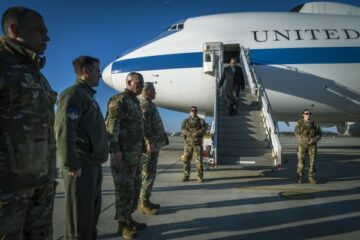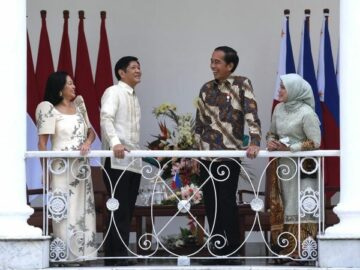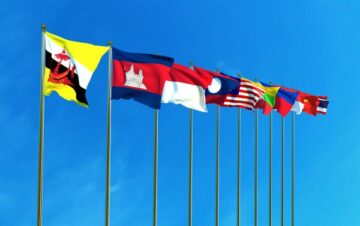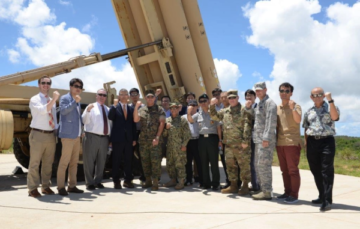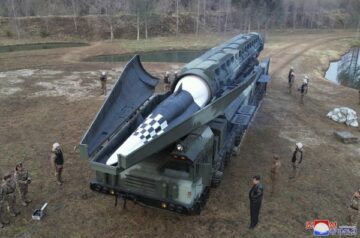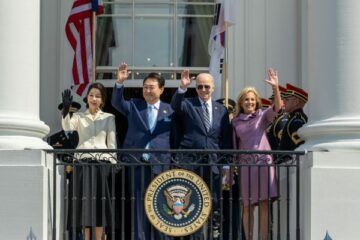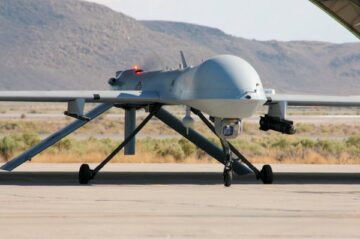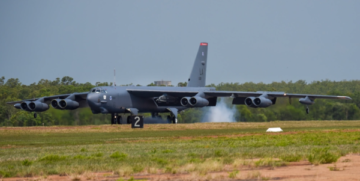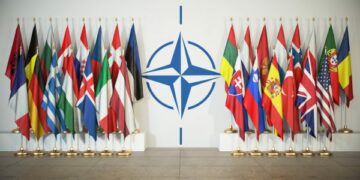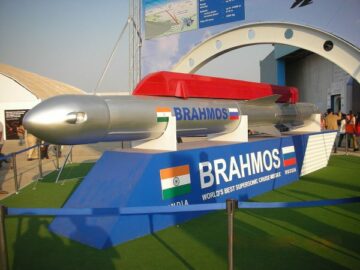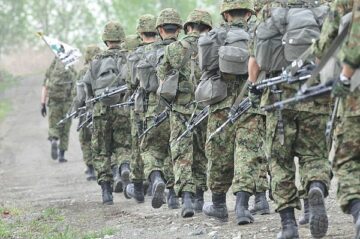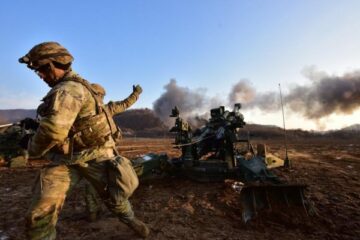
On September 26, Australia’s annual flagship naval engagement activity in the region, the Indo-Pacific Endeavor (IPE), kicked off for its fifth iteration since beginning in 2017. Over the next two months, some 1,800 Australian Defense Force (ADF) personnel, five naval vessels, and 11 helicopters will be carrying out bilateral and multilateral engagements in a record 14 countries across Southeast Asia and the Indian Ocean. This includes port visits, military exercises, capacity-building training and workshops, sporting events, and cultural activities with regional partners in the Maldives, Timor-Leste, Vietnam, the Philippines, Bangladesh, Sri Lanka, Laos, Cambodia, India, Thailand, Malaysia, Singapore, Brunei, and Indonesia.
While Australia’s IPE has become a routine military engagement activity, this year’s iteration will be noticeably different, reflecting the easing of operational constraints caused by the COVID-19 pandemic, political transitions at home, and Canberra’s increasingly wary perception of its strategic environment.
The scale and ambition of this year’s IPE is undoubtedly a symbolic statement that Australia is back “in force” after operational constraints brought about by the COVID-19 pandemic saw no iteration in 2020 and a scaled-back version of the activity in 2021. Even compared to pre-pandemic deployment levels, the 1,800 ADF personnel and the geographic scope of this year’s IPE should not be understated. For example, in 2019 – the last time that IPE was run at full scale – the ADF only deployed 1,200 personnel to seven countries across Southeast Asia and the Indian Ocean. During last year’s scaled-back iteration, only 700 personnel were deployed.
Even though the COVID-19 pandemic did play a significant role in dialling back Canberra’s naval diplomacy in the region, much has changed both at home and in Australia’s broader strategic environment over the past 12 months. There are three main reasons why this year’s IPE will be different compared to previous iterations.
First, there is a new government in Canberra. After bringing the Labor Party into power in the May 2022 federal elections, Prime Minister Anthony Albanese’s government has placed a premium on its engagement with Southeast Asia. In a clear sign of his government’s intent, Albanese carried out his first overseas bilateral visit to Indonesia less than a month after being elected. In July, Australia’s Foreign Minister Penny Wong – the first foreign-born Australian to hold the post – paid a visit to her hometown in Malaysia’s Kota Kinabalu, as well as touring Singapore and Vietnam. During her tour of Southeast Asia, Wong preached ASEAN centrality and emphasized Australia’s inalienable position as being a part of Asia.
Rhetoric aside, it’s clear that the new government is attempting to put its money where its mouth is. During the federal election campaign, Albanese pledged to establish an “Envoy to Southeast Asia” and an “Office of Southeast Asia” within Australia’s Department of Foreign Affairs and Trade. This was backed up by a commitment of $482 million in developmental assistance to be distributed amongst ASEAN states over the next four years.
The focus on Southeast Asia in this year’s IPE is certainly no coincidence. This is all the more apparent when we consider that, generally speaking, even-numbered years in the IPE calendar are traditionally meant to see a focus on the South Pacific – as occurred in 2018. With 2020 seeing no IPE and 2021 being focused on Southeast Asia and the Indian Ocean, the decision to return to Southeast Asia during an even-numbered year speaks to a shift in Canberra’s priorities.
While planning for this year’s IPE was probably well underway before the Albanese government came into power, it’s clear that Southeast Asia is the priority. All Association of Southeast Nations (ASEAN) states except Myanmar – as well as budding ASEAN member Timor-Leste – will see visits by the ADF this year. This is a noticeable increase since the last Southeast Asia-focused IPE in 2019, where ADF vessels only visited the ASEAN states of Malaysia, Thailand, Vietnam, Singapore, and Indonesia.
While we can only speculate, this year’s return to Southeast Asia is likely to be an attempt to allay any lingering ambivalence from Canberra’s shock AUKUS agreement last September. The trilateral security pact between Australia, the United Kingdom, and the United States sent waves through Southeast Asian capitals when it was announced that Australia would be acquiring nuclear-powered submarines with the help of Washington and London over the coming decades.
Second, the security agreement signed between China and Solomon Islands in April this year has undoubtedly played into long-held fears in Canberra about Beijing’s military intentions to Australia’s immediate north.
While one might expect a knee-jerk pivot to the South Pacific as a result of this, it would have been operationally difficult to incorporate the Pacific Islands into this year’s IPE. The distance between Sri Lanka and Fiji is no small amount to cover in a two or three-month window and the capabilities and needs of countries in Southeast Asia, the India Ocean, and the South Pacific are very different from one another.
Rather, Canberra’s expanded naval diplomacy in Southeast Asia and the Indian Ocean is part and parcel of a broader whole-of-government effort and speaks to concerns about similar security agreements being forged between Beijing and cash-strapped economies in the region. It’s no surprise that faltering economies in Sri Lanka and Bangladesh and investment-hungry ASEAN states such as Cambodia and Laos are on Canberra’s radar. The agreement between Honiara and Beijing was simply the wake-up call that Canberra needed to realize that its long-held strategic anxieties could very well come into reality.
Third, while seemingly far away, the shock waves sent by Russia’s invasion of Ukraine in February this year are arguably a contributing factor to Canberra’s calculations. Southeast Asia’s relatively weak response to Russia’s invasion of Ukraine, coupled with its continuing penchant for Russian weapons and expressed desire for cheap Russian oil, is a clear concern for Australia – a country that is a willing participant and staunch supporter of the international rules-based order.
While naval diplomacy is unlikely to move the needle on Southeast Asia’s instinctive tendency for neutrality or non-alignment when it comes to divisive issues between great powers, defense diplomacy activities such as the IPE are a key component of how Australia is able to generate and sustain its regional and global influence with a relatively small military. At the very least, providing regional countries with opportunities to engage with alternate security partners and build their own security resilience through training and workshops is an important part of Canberra’s efforts to keep any reverberations from Russia’s war in Ukraine far away from its shores.
It is clear that this year’s IPE is symbolic of a reinvigoration in Canberra’s post-pandemic defense engagement, recent political transitions, and rising anxieties about Australia’s strategic environment. A new government with a clear-eyed focus on Southeast Asia, China’s recent security agreement with Solomon Islands, and Russia’s invasion of Ukraine have all served to influence the expanded scope and size of Australia’s IPE this year.
For Australian defense planners, engagement activities such as the IPE are not just a photo opportunity. It is an intentional and measured way of bolstering the regional and international security architecture, as well as reducing the risk of coercion or instability to Australia’s north. The mantra defining this has, and will continue to be, that Australia must find its security in Asia, not from it.
- SEO Powered Content & PR Distribution. Get Amplified Today.
- Platoblockchain. Web3 Metaverse Intelligence. Knowledge Amplified. Access Here.
- Source: https://thediplomat.com/2022/10/why-australias-indo-pacific-endeavor-is-different-this-year/
- 1
- 11
- 12 months
- 2017
- 2018
- 2019
- 2020
- 2021
- 2022
- 9
- a
- Able
- About
- access
- acquiring
- across
- activities
- activity
- Ad
- After
- Agreement
- agreements
- All
- ambition
- amongst
- amount
- and
- announced
- annual
- Another
- Anthony
- apparent
- April
- architecture
- article
- Asean
- asia
- Asia’s
- asian
- Assistance
- Association
- attempting
- Australia
- Australian
- back
- backed
- Bangladesh
- become
- before
- Beginning
- Beijing
- being
- between
- Bringing
- broader
- brought
- budding
- build
- Calendar
- call
- Cambodia
- Campaign
- capabilities
- carrying
- caused
- Centrality
- certainly
- cheap
- China
- Chinas
- clear
- CNBC
- coincidence
- come
- coming
- commitment
- compared
- component
- Concern
- Concerns
- Consider
- constraints
- continue
- continuing
- contributing
- could
- countries
- country
- coupled
- cover
- COVID-19
- COVID-19 pandemic
- cultural
- decades
- decision
- defence
- Defense
- defining
- Department
- deployed
- deployment
- developing
- developmental
- DID
- different
- Diplomacy
- distance
- distributed
- during
- easing
- economies
- effort
- efforts
- elected
- Election
- Elections
- emphasized
- engage
- engagement
- Environment
- establish
- Even
- events
- example
- Except
- expanded
- expect
- expressed
- fears
- Federal
- Find
- First
- flagship
- Focus
- focused
- Force
- foreign
- from
- full
- generally
- generate
- geographic
- Global
- Government
- great
- helicopters
- help
- here
- hold
- Home
- How
- HTML
- HTTPS
- immediate
- important
- in
- includes
- incorporate
- Increase
- increasingly
- india
- Indian
- Indonesia
- influence
- instability
- intent
- Intentional
- intentions
- International
- invasion
- Islands
- issues
- IT
- iteration
- iterations
- July
- Keep
- Key
- Kingdom
- labor
- Last
- levels
- likely
- London
- Main
- Malaysia
- member
- might
- Military
- million
- money
- Month
- months
- more
- mouth
- move
- multilateral
- Myanmar
- Nations
- needed
- needs
- New
- next
- North
- noticeably
- occurred
- ocean
- ONE
- operational
- opportunities
- Opportunity
- order
- overseas
- own
- Pacific
- paid
- pandemic
- part
- partners
- party
- past
- perception
- Personnel
- Philippines
- Pivot
- planning
- plato
- Plato Data Intelligence
- PlatoData
- Play
- played
- political
- position
- Post
- post-pandemic
- power
- powers
- Premium
- previous
- Prime
- prime minister
- priority
- probably
- providing
- put
- radar
- Reality
- realize
- reasons
- recent
- record
- reducing
- region
- regional
- relatively
- resilience
- response
- result
- return
- Reuters
- rising
- Risk
- Role
- Run
- russian
- Scale
- scope
- security
- seeing
- September
- seven
- shift
- should
- sign
- significant
- similar
- simply
- since
- Singapore
- Size
- small
- some
- South
- Southeast Asia
- speaking
- Speaks
- sri lanka
- Statement
- States
- Stories
- Story
- Strategic
- subscribe
- such
- supporter
- surprise
- Thailand
- The
- The Philippines
- the United Kingdom
- their
- this year
- three
- Through
- time
- to
- Tour
- touring
- trade
- traditionally
- Training
- transitions
- Ukraine
- Underway
- undoubtedly
- United
- United Kingdom
- United States
- version
- Vietnam
- Visits
- war
- War in Ukraine
- washington
- Watch
- waves
- week
- while
- will
- willing
- within
- Workshops
- would
- year
- years
- zephyrnet

